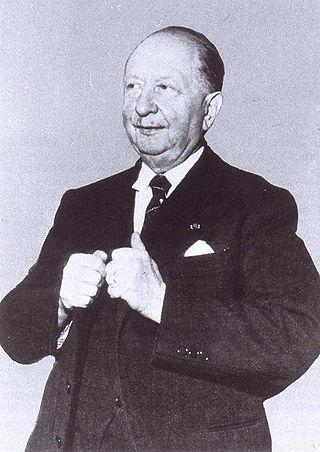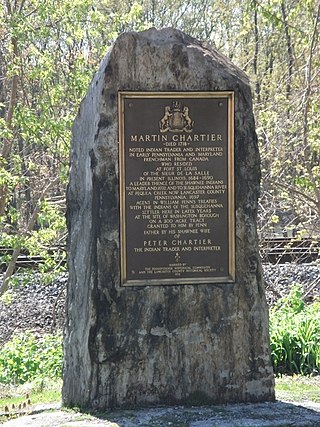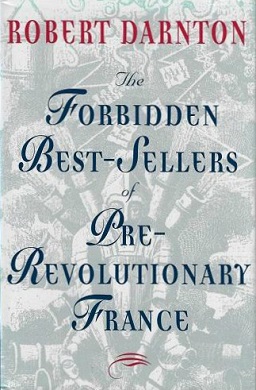
The Annales school is a group of historians associated with a style of historiography developed by French historians in the 20th century to stress long-term social history. It is named after its scholarly journal Annales. Histoire, Sciences Sociales, which remains the main source of scholarship, along with many books and monographs. The school has been influential in setting the agenda for historiography in France and numerous other countries, especially regarding the use of social scientific methods by historians, emphasizing social and economic rather than political or diplomatic themes.

The Renaissance is a period of history and a European cultural movement covering the 15th and 16th centuries. It marked the transition from the Middle Ages to modernity and was characterized by an effort to revive and surpass the ideas and achievements of classical antiquity. Associated with great social change in most fields and disciplines, including art, architecture, politics, literature, exploration and science, the Renaissance was first centered in the Republic of Florence, then spread to the rest of Italy and later throughout Europe. The term rinascita ("rebirth") first appeared in Lives of the Artists by Giorgio Vasari, while the corresponding French word renaissance was adopted into English as the term for this period during the 1830s.

The Age of Enlightenment was the intellectual and philosophical movement that occurred in Europe in the 17th and the 18th centuries.

The historiography of the French Revolution stretches back over two hundred years.
Cultural history records and interprets past events involving human beings through the social, cultural, and political milieu of or relating to the arts and manners that a group favors. Jacob Burckhardt (1818–1897) helped found cultural history as a discipline. Cultural history studies and interprets the record of human societies by denoting the various distinctive ways of living built up by a group of people under consideration. Cultural history involves the aggregate of past cultural activity, such as ceremony, class in practices, and the interaction with locales. It combines the approaches of anthropology and history to examine popular cultural traditions and cultural interpretations of historical experience.

The "figurative system of human knowledge", sometimes known as the tree of Diderot and d'Alembert, was a tree developed to represent the structure of knowledge itself, produced for the Encyclopédie by Jean le Rond d'Alembert and Denis Diderot.

"The Sorcerer's Apprentice" is a poem by Johann Wolfgang von Goethe written in 1797. The poem is a ballad in 14 stanzas.

The Morning Post was a conservative daily newspaper published in London from 1772 to 1937, when it was acquired by The Daily Telegraph.

Robert Choate Darnton is an American cultural historian and academic librarian who specializes in 18th-century France.

The Bitter Tea of General Yen is a 1933 American pre-Code drama war film directed by Frank Capra and starring Barbara Stanwyck, and featuring Nils Asther and Walter Connolly. Based on the 1930 novel of the same name by Grace Zaring Stone, the film is about an American missionary in Shanghai during the Chinese Civil War who gets caught in a battle while trying to save a group of orphans. Knocked unconscious, she is saved by a Chinese general warlord who brings her to his palace. When the general falls in love with the naive young woman, she fights her attraction to the powerful general and resists his flirtation, yet remains at his side when his fortune turns.
The history of mentalities, from the French term histoire des mentalités, is an approach to cultural history which aims to describe and analyze the ways in which historical people thought about, interacted with, and classified the world around them, as opposed to the history of particular events, or economic trends. The history of mentalities has been used as a historical tool by several historians and scholars from various schools of history. Notably, the historians of the Annales School helped to develop the history of mentalities and construct a methodology from which to operate. In establishing this methodology, they sought to limit their analysis to a particular place and a particular time. This approach lends itself to the intensive study that characterizes microhistory, another field which adopted the history of mentalities as a tool of historical analysis.
Robert Buford Pippin is an American philosopher. He is the Evelyn Stefansson Nef Distinguished Service Professor in the John U. Nef Committee on Social Thought, the Department of Philosophy, and the college at the University of Chicago.

Le Bourgeois gentilhomme is a five-act comédie-ballet – a play intermingled with music, dance and singing – written by Molière, first presented on 14 October 1670 before the court of Louis XIV at the Château of Chambord by Molière's troupe of actors. Subsequent public performances were given at the theatre of the Palais-Royal beginning on 23 November 1670. The music was composed by Jean-Baptiste Lully, the choreography was by Pierre Beauchamp, the sets were by Carlo Vigarani and the costumes were done by the chevalier d’Arvieux.
Cat burning was a form of cruelty to animals as an entertainment or festivity in Western and Central Europe prior to the 1800s. People would gather cats and hoist them onto a bonfire causing death by burning or otherwise through the effects of exposure to extreme heat. In the medieval to early modern periods, cats, which were associated with vanity and witchcraft, were sometimes burned as symbols of the devil.
Dominick LaCapra is an American-born historian of European intellectual history, best known for his work in intellectual history and trauma studies. He served as the Bryce and Edith M. Bowmar Professor of Humanistic Studies at Cornell University, where he is now a professor emeritus.

Roger Chartier,, is a French historian and historiographer who is part of the Annales school. He works on the history of books, publishing and reading. He teaches at the École des Hautes Études en Sciences Sociales in Paris, the Collège de France, and the University of Pennsylvania.

Martin Chartier was a French-Canadian explorer and trader, carpenter and glove maker. He lived much of his life amongst the Shawnee Native Americans in what is now the United States.

Journal of My Life is an autobiography by Jacques-Louis Ménétra, an eighteenth-century master glazier in Paris. Begun in 1764, when Ménétra returned from a journeyman's tour of the French provinces, Ménétra's text intersperses accounts of his life on the road and in Paris with tall tales, braggadocio, jokes, and accounts of his seductions and pranks. In the words of historian Robert Darnton, Ménétra's narrative "restores the human dimension to the study of social conditions and brings flesh and blood to lifeless sociological categories. What we can finally see, with the help of these memoirs, is ordinary, everyday life."
As of 2018, five firms in France rank among the world's biggest publishers of books in terms of revenue: Éditions Lefebvre Sarrut, Groupe Albin Michel, Groupe Madrigall, Hachette Livre, and Martinière Groupe.

The Forbidden Best-Sellers of Pre-Revolutionary France is a 1996 book by literary scholar Robert Darnton. Darnton maps the "forbidden sector" of eighteenth-century French literature, using archival records that showed the popularity of forbidden books including pornography, utopian literature, and a popular genre of slanderous political works. In 1995, the book won the National Book Critics Circle Award for Criticism.














